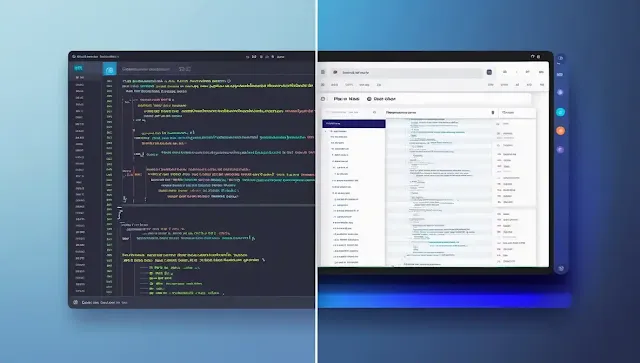Introduction
Modern applications demand powerful backends — often with real-time capabilities and low maintenance. If you're a developer working with Firebase, using local and cloud functions effectively is essential. From executing custom code blocks to deploying scalable backend logic in Firebase Cloud Functions, this guide walks you through everything you need to know.
Let’s dive into the step-by-step usage, comparisons, and best practices of using local and cloud functions in Firebase projects, along with expert insights and practical code snippets.
🔧 Understanding Local Functions and Custom Code Blocks
Local functions refer to scripts or logic snippets you run locally during development or within frontend code (if secure). They're perfect for:
-
Quick prototyping
-
Frontend-side input validation
-
Temporary development logic
-
Testing APIs without deploying
✅ Example: Local Function for Input Validation
function validateEmail(email) {
const regex = /^[^\s@]+@[^\s@]+\.[^\s@]+$/;
return regex.test(email);
}
console.log(validateEmail('user@example.com')); // true
Local code like this improves UX by providing immediate feedback — but never trust local validation alone. Always reinforce it with backend logic.
☁️ Introduction to Firebase Cloud Functions
Firebase Cloud Functions allow you to write backend code that automatically responds to events — whether triggered via HTTPS, Firestore changes, Auth events, or Pub/Sub messaging.
These serverless functions scale automatically and are ideal for:
-
Secure processing of payments
-
Sending notifications
-
Updating Firestore or Realtime Database
-
Creating webhooks or APIs
📦 Setting Up Firebase Cloud Functions
Before you begin, ensure:
-
Node.js and Firebase CLI are installed
-
You've initialised Firebase in your project directory
🛠️ Installation & Initialisation
npm install -g firebase-tools
firebase login
firebase init functions
Select JavaScript or TypeScript, and Firebase sets up a functions/ folder with everything needed.
⚙️ Writing Your First Cloud Function
🔐 HTTPS Callable Function Example
// functions/index.js
const functions = require("firebase-functions");
const admin = require("firebase-admin");
admin.initializeApp();
exports.sayHello = functions.https.onCall((data, context) => {
const name = data.name || "Guest";
return { message: `Hello, ${name}! Welcome to Firebase.` };
});
🔁 Deployment
firebase deploy --only functions
Once deployed, this can be securely called from a Firebase client SDK:
import { getFunctions, httpsCallable } from "firebase/functions";
const functions = getFunctions();
const sayHello = httpsCallable(functions, "sayHello");
sayHello({ name: "Rajiv" }).then(result => {
console.log(result.data.message); // Hello, Rajiv!
});🧩 Cloud Functions for Firestore Triggers
📁 Example: On Document Creation
exports.onNewUser = functions.firestore
.document("users/{userId}")
.onCreate((snap, context) => {
const newUser = snap.data();
console.log("New user added:", newUser.name);
return null;
});
Use this to automate:
-
Welcome emails
-
Default data population
-
Logging or analytics
🤔 When to Use Local vs Cloud Functions
| Feature | Local Functions | Cloud Functions |
|---|---|---|
| Execution | On device | Server-side |
| Security | Less secure | Highly secure |
| Scalability | Limited | Auto-scaled |
| Best For | UI logic, validation | Auth, DB, APIs, payments |
| Internet Required | No | Yes (to deploy & run) |
💬 Expert Insight: Why Using Local and Cloud Functions is a Game-Changer
— Arun Kapoor, Firebase Trainer & Consultant
🧪 Testing Firebase Cloud Functions Locally
Firebase provides a local emulator to test functions before deployment.
🧰 Run Emulator:
firebase emulators:start --only functions
You can then call your functions from your app while testing locally, saving time and cost.
🎨 Creating Responsive UI That Uses Cloud Functions
Let’s say you want to display user points by calling a Cloud Function.
✅ HTML + Tailwind CSS Example
<div class="max-w-md mx-auto p-6 bg-white rounded-xl shadow-md">
<h2 class="text-xl font-semibold">Your Points</h2>
<p id="points" class="text-lg text-blue-600 mt-2">Loading...</p>
</div>
✅ JavaScript Fetch Function Points
const getUserPoints = httpsCallable(functions, "getUserPoints");
getUserPoints({ userId: "abc123" }).then(result => {
document.getElementById("points").innerText = result.data.points + " pts";
});
This tight integration ensures that you can update the UI dynamically — without overloading Firestore reads.
🛡️ Security Best Practices
-
Use environment configs: Store API keys and secrets via
firebase functions:config:set -
Always validate data server-side
-
Set function memory & timeout limits to avoid misuse
-
Restrict permissions using Firebase Authentication and Rules
📈 Optimising Cloud Functions for Performance
-
Bundle functions logically (not too many small ones)
-
Avoid cold starts: Use
keepWarmfunctions if necessary -
Log effectively: Use
functions.loggerfor debugging -
Monitor with Firebase's built-in dashboard
🧩 Real-World Use Case Example
Imagine you're building a travel booking app:
-
✅ Local function validates the form
-
✅ Cloud function checks availability from database
-
✅ Cloud function sends booking confirmation email
-
✅ Realtime UI updates booking status
This architecture keeps the app lightweight and powerful.
🔄 Wrapping Up
Whether you're handling quick validations or backend business logic, using local and cloud functions in Firebase projects empowers you to build responsive, secure, and scalable applications.
By combining local frontend logic with Firebase’s powerful Cloud Functions, you can offer users a seamless and professional experience.
Disclaimer
While I am not a
professional Flutter developer or UI/UX expert, I have thoroughly researched
this topic using official Flutter documentation, expert opinions, and industry
best practices to compile this guide. This post aims to provide helpful
insights and practical examples to support your learning journey. However, for
advanced or complex Flutter projects, seeking advice from experienced
developers is always recommended to ensure best results.
Your suggestions and
views on Flutter responsive design are welcome—please share below!
🏠

